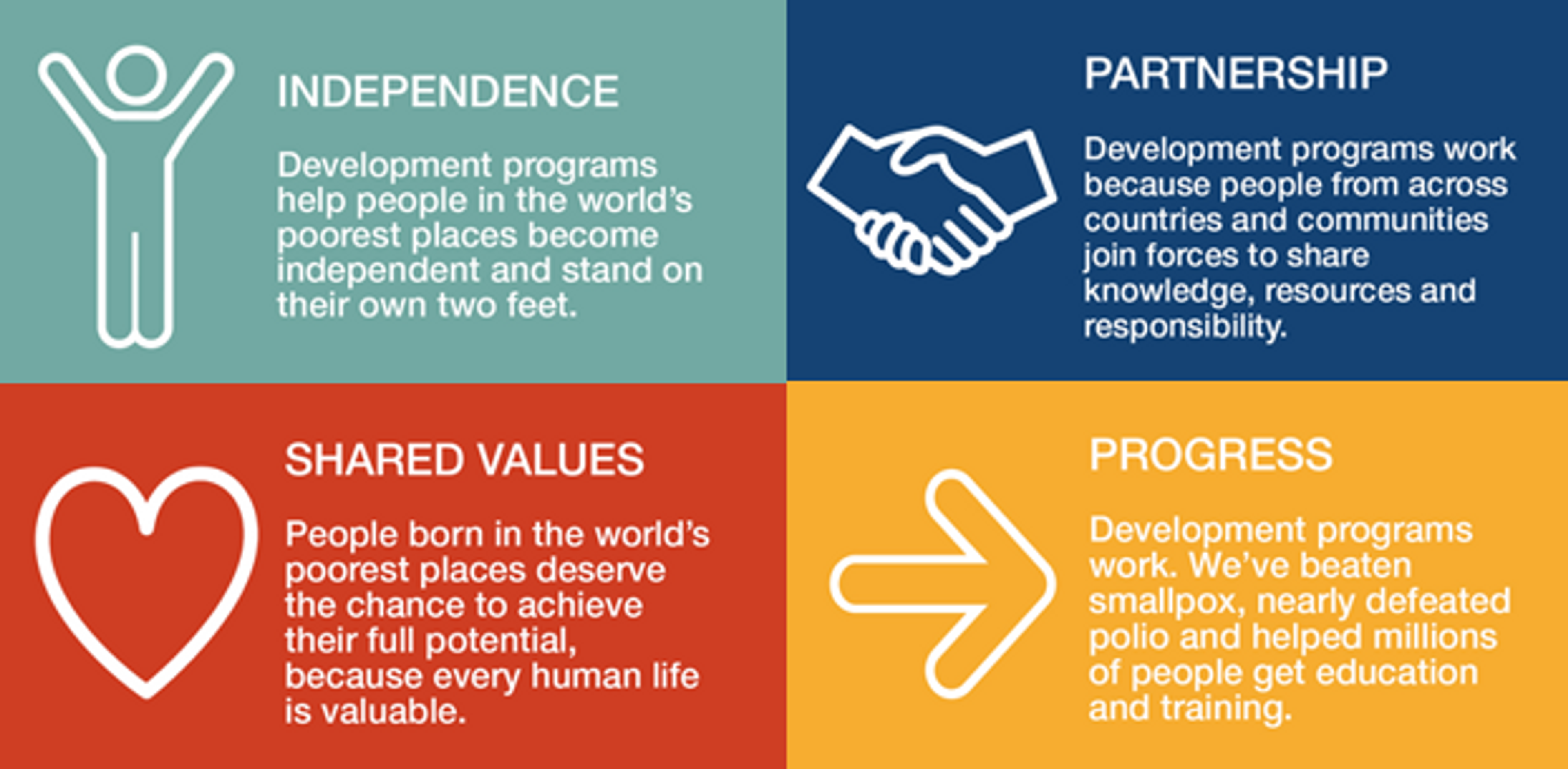Switching the story: how to change the narrative on development
According to research conducted by Bond across the UK, France, Germany and the USA, 80% of people agree with this statement:
‘Despite investment in aid, not much has changed for those in poverty over the last twenty years.’ [1]
This statement is false. Extreme poverty has actually halved over the last twenty years [2].
Clearly, 80% of people have formed a belief about development based on unreliable evidence. Surely if we show them the real facts – with hard evidence to back up our claims - we can create a different attitude to international development and maximise giving?
In fact, the evidence would suggest it isn’t as simple as that. Statistics on poverty and the impact we can make convinced me to take the Giving What We Can pledge, but it is probably precisely because I’m drawn to statistics and evidence-based research that effective altruism appealed to me in the first place. It makes sense that facts and figures would help to convince the stereotypical Effective Altruist – the analyst, the programmer, the maths or philosophy graduate– but what of the population at large?
The 2014 Narrative Project sought to understand the public perception of international development, and how changing our ‘stories’ about aid can promote positive engagement [3].
The research found that there was a generally negative perception of international development, with a focus on waste and what doesn’t work – rather than what does. Foreign aid is viewed as ‘a good idea done badly’.
Despite this, the project identified an ‘undecided audience’ who - if reached in the right way - could significantly increase support for development and become effective donors.
The Narrative Project found that around a third of the public are ‘engaged’ with international development – they have some knowledge of the issues and regard ending poverty as at least ‘somewhat important’ – this represents a reachable audience for the Effective Altruism movement.
Yet the data on progress which so appeals to ‘natural’ EAs may fail to influence this group. Personal beliefs heavily impact the weight we give to facts. Perhaps instead of providing new research and clear infographics, we should be focusing on changing prevailing narratives about the impact of international development by telling stories which truly resonate with the public.

This formed the second part of The Narrative Project’s research. They explored the themes that were the most influential in creating positive perceptions of development and increasing the likelihood of donating. We need to emphasise these themes when we discuss Effective Altruism with potential new supporters:
- Independence. The theme of self-reliance was found to be highly influential. We should always emphasise that the ‘end goal’ of development is to give everyone the opportunity to support themselves and achieve independence.
- Justice. We can make the moral case that opportunity is unfairly distributed, and people cannot help where they are born. We should emphasise that with the right support, people in poverty can access opportunities for independence and help themselves.
- Shared values. We need to talk about people in poverty as individuals who share our aspirations and demonstrate ingenuity, ambition and pride. We should avoid ‘pity language’ and an overemphasis on suffering; while pity-based appeals create an instant emotional response, long-term they actually decrease engagement with development issues [4].
- Partnerships. We need to show that development works through the efforts of both donors and recipients. We can do this by highlighting the active role people in poverty take in achieving self-reliance, and show that effort, risk and responsibility is shared between developed and developing nations. Donor countries and celebrity patrons should not be positioned as ‘heroic’.
- Equality. Empowering women and girls resonates with the public, as this is something we can relate to in our own lives.
Using these themes, we can change beliefs about development, and create a new narrative about effective ways to eliminate poverty. For example, the UK NGO network Bond - a partner in The Narrative Project’s creation - highlighted ONE’s ‘What Make a Strong Woman?’ video for their ‘Poverty is Sexist’ campaign as a great example of the new narrative [5].
By focusing on empowering women and demonstrating shared values of pride, ambition and individual will to succeed, the video inspires action where it could have easily inspired pity and reinforced stereotypes about the developing world.
Switching the story on development can be the difference between deepened commitment and donor fatigue. By understanding what appeals to the public, we can make our own appeals significantly more effective.